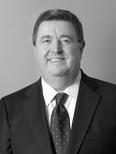 Author: CJ Brott, Capital Ideas
Author: CJ Brott, Capital Ideas
Covestor models: Macro Plus Income, ETF Only
Disclosure: Long MDY, MOO, XES, USL, ACOM, GNC, PER
The current news environment continues to drive overly emotional reactions in the U.S. equity markets. While Europe is a risk, we do not believe it will be fatal for the U.S. financial system. We therefore continue to try to invest for the longer term while ignoring day to day volatility.
Our investment approach is macro for both of our models, Income Plus and ETF Only. The ETF Only model continues to hold its positions with two themes as its core philosophy.
First, we believe the U.S. markets still offer the best risk adjusted returns of all available investable options, and therefore position a major part of our portfolio in U.S. mid-caps, using the SPDR Mid Cap ETF (MDY) as our representative fund.
Secondly, we think the expanding world population will continue to consume growing amounts of both food and energy. Therefore we remain positioned in those ETFs which we feel will best take advantage of those trends. Those ETFs are the Market Vectors Agribusiness Fund (MOO), the SPDR Oil & Gas Equipment and Services Fund (XES) and the US 12 Month Oil Fund (USL). See this recent post for my reasoning for why we own USL and not USO.
As we have stated more than once, the Macro Plus Income portfolio is the company pension plan. Therefore the investment policy is bound by “prudent man” considerations. Along with being longer term in its approach, the portfolio design is based on a GARP methodology and seeks growing current income and some growth of principle.
Recently we added small amounts of both Ancestry.com (ACOM) and GNC Holdings Inc. (GNC) to the portfolio. We believe both provide reasonable value and good opportunity for growth of principle.
On the income front, Sandridge Permian Royalty Trust (PER) declared its first dividend of $0.72 for the quarter. We feel this validates our belief that the trust will pay out a current yield of over 10% at current prices. More importantly, we expect some growth in principle as the trust price rises to level where its yield matches that of its peers.
While neither portfolio trades actively by today’s standards, we expect to make changes as market and economic considerations warrant.


